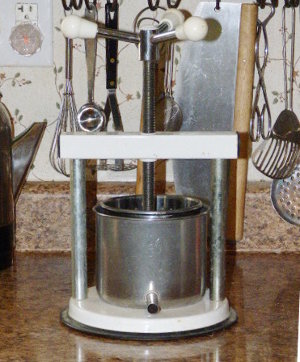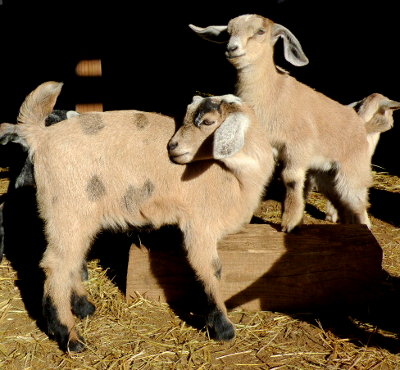Progress on Dan's hand is slow but mostly steady. The sawed fingers are starting to look like fingers! Still no fingernail on the one and you can see where the table saw made it's mark, but he can move it pretty well. The other still has a fingernail, but there are hunks of flesh missing, so that between that and ends of the knuckle bone gone, it looks somewhat deformed. He can move that one too, but just a little. He says he has to fight an overwhelming mental image of the finger coming off again. No, that's not rational and he knows it, but it's one of the things he deals with and must force himself to move it. The fingers still hurt but he says it's tolerable and no longer takes anything for pain. They are extremely sensitive to pressure and cold. (You can
read here how we're treating the injury to promote healing.)
When can he go back to work? Unknown. Most of you know he's a trucker, but specifically he currently hauls overseas shipping containers from an inland port to a manufacturer and back again. If it was just holding the steering wheel, no problem. He's starting to use the hand for things like driving our vehicles and drying dishes. It's the things that require strength in both hands that are the problem: opening and closing stiff heavy container doors, connecting and disconnecting brake lines to the trailer, cranking the trailer's "landing gear" up and down for loading and unloading the containers.
The good news is that his social security retirement will start about the middle of April. It won't be a huge sum, but it will pay the mortgage, utilities, phone, internet, and car insurance, and leave us a little over $300 each month for food, fuel, and everything else. Between that and the couple hundred dollars I make each month from my writing, it will be enough! It will be about the same as he was making with his current trucking job, except the earnings from writing won't be extra anymore.
In a sense we've been training financially for this all along. When he's between jobs we've had to go weeks or sometimes months with little to no income. Each time we've learned how to live more efficiently on what we have rather than what we buy. Each time I've discovered that my frustration and anxiety over having no income has become less and less. I've learned to look less at the things I want and more at what I can do with what I have. I've learned to trust more in Providence.
Assuming he can go back to work, his income from his current job is less than the cap social security places on job income. That means they won't deduct from his SS benefits for making too much money.
Of the medial bills, the first ER is completely paid off thanks to everyone's help through
GoFundMe. What a blessing community is! Because we were able to pay in full, we got an additional discount. Of the second ER bill, we've contested it, because he didn't go there for emergency services. He went because he had an appointment with a hand specialist and that was where he was told to meet him. We have copies from the first ER doctor documenting all that, but whether the second hospital will acknowledge or adjust remains to be seen. We should have enough from your donations to pay that one off once they make a decision.
One thing we learned from this experience is that he doesn't qualify for Medicaid. In our state Medicaid is only available for low income adults over 65 or for children. The other forms of aid haven't been any more hopeful, and all the layers of bureaucracy make it difficult to talk to someone able and willing to make an authoritative decision.
Regarding our situation we've had something of a mixed bag of reactions. Many of you have been quick to offer prayer support and financial help if you are able. This is what community is all about and we are extremely grateful to each and every one of you. But also I've gotten a number of comments (deleted) and emails of which the gist is basically: "I'm sorry Dan got hurt and I hope he gets better, but this is what you get for not having health insurance."
Apparently there is a belief out there that because of the affordable care act, health insurance is truly affordable to everyone. That's what they told us, right? So the only reason someone doesn't have it is because they
choose not to have it. Hence no sympathy. Except that what they told us was merely promotional rhetoric, i.e. a sales pitch spun to gain support for it. After all, this is what politicians do, right? How else can you explain all those broken campaign promises? Then the bill passed and reality set it. Unfortunately, nobody cares about that. Only a few sources have actually analyzed the subsequent data, but politicians ignore that information and the mainstream media censors it, instead telling us that "victims of Obamacare" is all a hoax. Then when folks like Dan and me have problems, it's our own fault. And there doesn't seem to be a shortage of people willing to tell us so.
Well, I'm not going to try to convince anybody of anything. The lines are already drawn and people choose what they want to believe. Personally, I think that putting our hope in politics is not a wise idea. Why? Because politics has nothing to do with helping people and solving problems, but everything with to do with power. The current political battle over health care (and everything else) is just a big King of the Hill game with no thought or care for who gets hurt. And it's always the little guy who gets hurt.
Unfortunately all too many folks are emotionally chained to their political beliefs, sometimes in complete defiance of logic. I say Stalin got it wrong. Religion isn't the opiate of the masses, politics is.
The irony of all this is that if we did have insurance, we would still have to pay this out of pocket because the total costs would have been less than our deductible. But, we would have had to pay full price because we wouldn't have gotten the self-pay discounts. Would our critics have been willing to help us then? I wonder.
So that's where it stands at the moment. I won't do anymore of these long updates on Dan. Progress is steady but slow, so I'm sure a brief here and there comment will be enough to keep you up to date. Your prayers are still appreciated.






















































